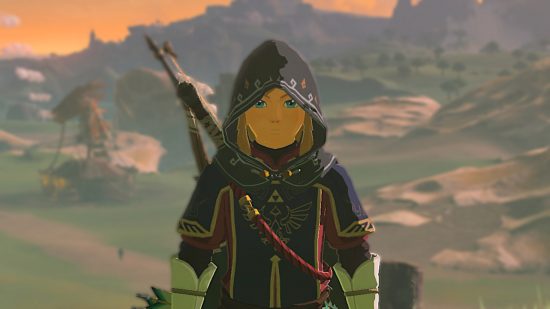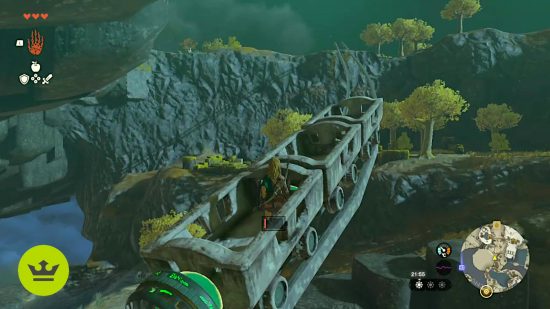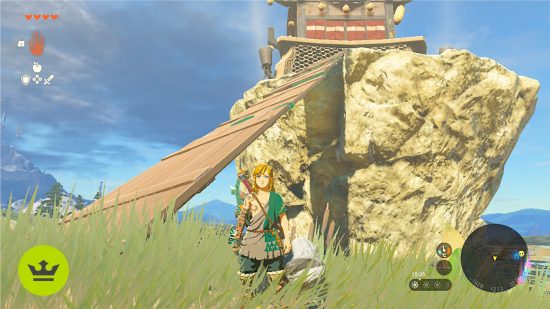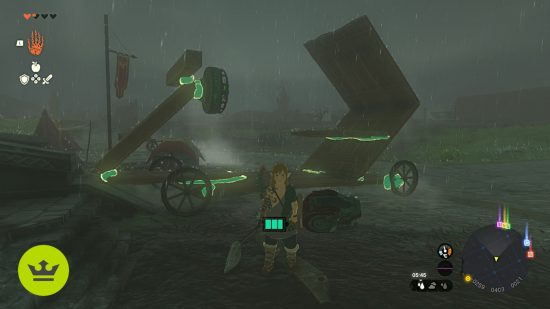Our Verdict
The Legend of Zelda Tears of the Kingdom is an outstanding achievement, masterfully evolving upon nearly all of the major strengths and weaknesses of its predecessor to create one of the most inventive and exciting open world adventures ever. Matched with deep world-building and characters, it’s an adventure you don’t want to miss.
Creating a follow-up to The Legend of Zelda Breath of the Wild seems almost a Herculean task. Widely praised for its excellent sense of discovery and exploration, how do you capture that special magic a second time around? Moreover, how do you go beyond it to create something more? Well, after spending several weeks with The Legend of Zelda Tears of the Kingdom, we can confidently say that it expands on nearly every facet of its predecessor, proving itself to be much more than just Breath of the Wild 2.
Breath of the Wild was very much an outlier in the established Zelda franchise, choosing to forgo the focus on a tightly woven story for a grand open world, emphasizing exploration above all else. While it excelled in this regard, it was no doubt at the cost of the traditional Zelda storytelling fans had come to expect. After all, the most interesting aspects of the plot had already happened – 100 years before Link woke up in the Shrine of Resurrection.
Tears of the Kingdom places the narrative at the forefront of its improvements. Looking to mesh these two philosophies to create both a rich and sprawling open world teeming with discovery and a compelling narrative to boot.
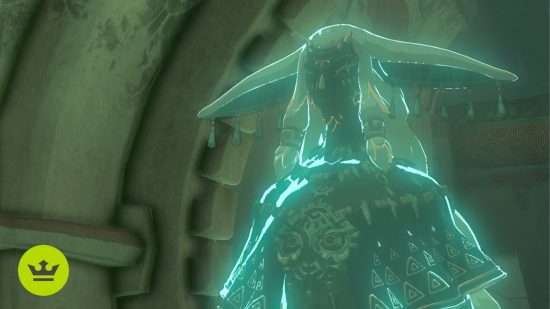
Like Star Wars The Force Awakens was to A New Hope, the narrative structure of Tears of the Kingdom is largely the same as Breath of the Wild: Link wakes up after disaster, and is sent to investigate each of the four main tribes of Hyrule to put a stop to Ganon. Despite this mirroring, Tears of the Kingdom’s story is much more active and compelling. The sense of isolation that permeated Breath of the Wild is largely replaced with a greater sense of companionship between characters that fills the world and story with life.
Despite the greater emphasis placed on the narrative in Tears of the Kingdom, it likely won’t be enough for those who vehemently opposed the more open-ended nature of Breath of the Wild’s story. There is a marked improvement, but it is not a return to the concise and tailor-made epic adventures of previous generations of Zelda. Nevertheless, for those like myself who were willing to accept Breath of the Wild’s approach but wanted to see more, The Legend of Zelda Tears of the Kingdom will deliver the perfect balance.
This feeling of a more lively Hyrule is as much a world design decision as it is a thematic one. One of my biggest fears heading into the sequel was how different the world would be. After all, I was enthralled by Breath of the Wild’s rendition of Hyrule and explored every inch of it Nintendo would let me. When I discovered that Tears of the Kingdom would use the same map, I was cautious that I’d be retreading the same familiar ground with a different coat of paint at best.
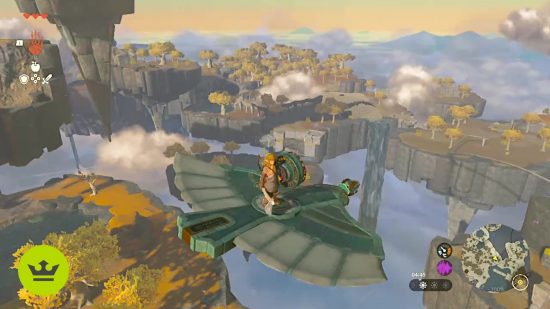
The land of Hyrule a few years on from the end of the Calamity has begun to bounce back from the brink, rebuilding what was lost and expanding beyond. Of course, many of the previous locations return – Kakariko Village, Hateno Village, Zora’s Domain, and Hyrule Castle to name a few – but new locations also dot the landscape. Lookout Landing, a new village on the open plains outside Hyrule Castle is likely going to be the first location players visit when they touch ground. This area, once infected with deadly Guardians, is now home to a new community fighting to save the new Hyrule that’s emerged since the Calamity and now the Upheaval. Despite the topography being largely the same on the surface, it feels almost completely different thanks to new locales and additions to old favorites. And that’s before you realize just how much has been added above and below Hyrule in Tears of the Kingdom.
With new underground spaces and the floating Sky Islands up in the clouds, Hyrule in TOTK feels at least twice as large as it did in BOTW. The gloomy and mysterious underground caverns and tunnels offer a complete aesthetic change to the scenery aboveground. As for the Sky Islands, they’re not as big as I thought they’d be, but they are dense with activities and mystery. In fact, each Sky Island is almost like its own toy box, with a unique gimmick to play around with. Some have mini-games, some have minecart roller coasters over the cloudy abyss, and some have mind-bending puzzles.
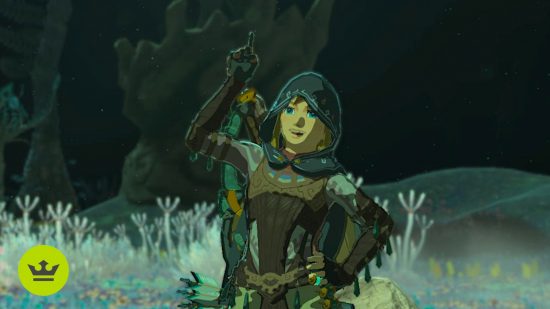
Echoing Elden Ring, and to a large extent, its predecessor, Tears of the Kingdom’s rendition of Hyrule is vast, dense, and ever-evolving. The alluring free-form exploration at the heart of Tears of the Kingdom, expanding on the already excellent design of Breath of the Wild, will repeatedly find new ways to draw you in. Frequently you will set out with a clear plan, only to be distracted by a rock hiding a Korok, a cave concealing treasure, or an NPC looking for an extra hand. There’s a world full of possibilities and things to uncover.
However, perhaps the most monumental improvement of the sequel are the brand new Tears of the Kingdom powers which serve to heighten the sense of freedom and resolve many of the issues players had with Breath of the Wild. While the fun powers of Breath of the Wild sadly don’t return, Link’s new abilities are significantly more dynamic, opening new possibilities that dwarf the potential of Breath of the Wild.
The most exciting new ability, Ultrahand, will undoubtedly leave a lasting impression on players and the industry going forward. Ultrahand lets players attach a variety of objects together such as wood planks, rocks, or Zonai devices like fans, balloons, or rockets, to create pretty much anything you can imagine. From simple bridges to giant mechs, Ultrahand opens up everything to the player. It’s hard to argue with just how impactful this single new ability is. Blocked by a large gap? Create a plane or a huge bridge. Got a long distance to travel? Make a glider, a car, or even a hoverbike.
Perhaps most interesting, however, is how this can be used in combat. I frequently found myself constructing strange devices to help me out in tough situations – walls of cannons, a timebomb on a cart, a barrier – thanks to how dynamic and potentially powerful Ultrahand can be. If you can think of something, you can create it.
However, while this works absolutely wonders in the overworld of Hyrule, it does water down some of the shrines. Ultrahand undeniably encourages a wide range of creative solutions, but is so strong in doing so it’s often the only method you’d ever want or need to use to clear a shrine. It’s almost instinctual to immediately activate Ultrahand when entering a shrine to examine the toybox at your disposal. Like the common criticism of Breath of the Wild having too many Tests of Strength shrines, perhaps Tears of the Kingdom relies too heavily on Ultrahand as the premier tool used in puzzle solutions.
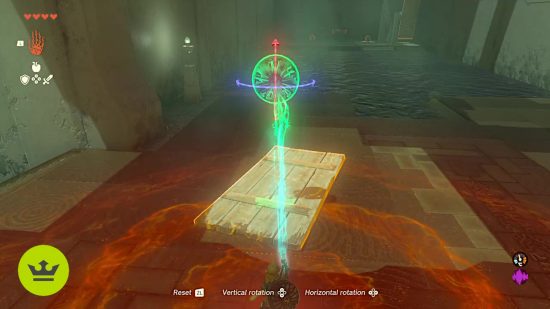
That’s not to say, however, that Tears of the Kingdom’s abilities and puzzles are not a huge improvement over its predecessor, but shrines will begin to feel a bit repetitive for players as they reach their fiftieth or sixtieth one. However, this is really a tiny blot on the game as a whole, and there are plenty of shrines that don’t fall into the Ultrahand trap as well, which are truly impactful moments.
The puzzles and shrines that do encourage you to use the full extent of Link’s new arsenal, however, are extraordinary. One sticks out to me instantly, which involved using water bubbles to lift Link and objects around, accommodating gravity as you manipulated the stage with Ultrahand and Rewind. This is just one example of the creative puzzle setups that require a more comprehensive knowledge of the full suite of abilities, not just creative Ultrahand creations. Most excitingly, these types of puzzles not only tested my skills but taught me completely new ways to use the abilities I thought I had mastered, which could then be used in the overworld of Hyrule for even more creative shenanigans.
That leaves arguably the most important ingredient for any Zelda entry – dungeons. Breath of the Wild was criticized heavily for its repetitive and clunky dungeon design, leaving the sequel with a mighty task on its plate – bringing dungeons up to the high standard fans expect of the series. Tears of the Kingdom’s dungeons are undoubtedly a lofty improvement over its predecessor, crafting more bespoke dungeons for each zone and providing much more build up to the eventual event, while also offering up more dungeons overall. You’ll venture through a unique zone packed full of puzzles and set-pieces alongside companions, better melding the two forces of gameplay and narrative as you learn more about the characters and their region.
With that said, the bombastic build up to the dungeons are often the most entertaining part, leaving the actual dungeon event feel rather underwhelming compared to the ingenuity preceding it. Often, the dungeon is a few puzzles building on a mechanic before heading into a boss fight. They’re by no means boring or lacking creativity, but they do lack the grandiosity of the journey to the dungeon. The unique temple bosses, however, do keep you on your toes much more than the repetitive Blight enemies from Breath of the Wild’s Divine Beast dungeons.

The Legend of Zelda Tears of the Kingdom revels in player freedom; the freedom to explore a dense and intriguing world, to understand the story at their own pace, and to create novel vehicles and structures that I can’t imagine even the developers saw coming. It masterfully builds on the excellent groundwork of Breath of the Wild to create one of gaming’s greatest adventures to date – so much so that it will be hard to go back to its highly-regarded predecessor and shake the feeling that it was not just the staging ground for Nintendo’s true creative ambition. Not without its flaws, Tears of the Kingdom represents a behemoth step forwards that will likely shape and influence many of the games we see over the next few years.
It does, however, leave the Zelda franchise in a weird position. Tears of the Kingdom continues down the same vein as Breath of the Wild, refining the free-form, open world stylings to near perfect, but largely leaving the old-school style behind. Despite the huge popularity of both Breath of the Wild and now Tears of the Kingdom, I hope we see the next Zelda game take a different approach. While that’s my personal preference, there is absolutely no escaping the fact that Tears of the Kingdom is one of the best games of all time.
